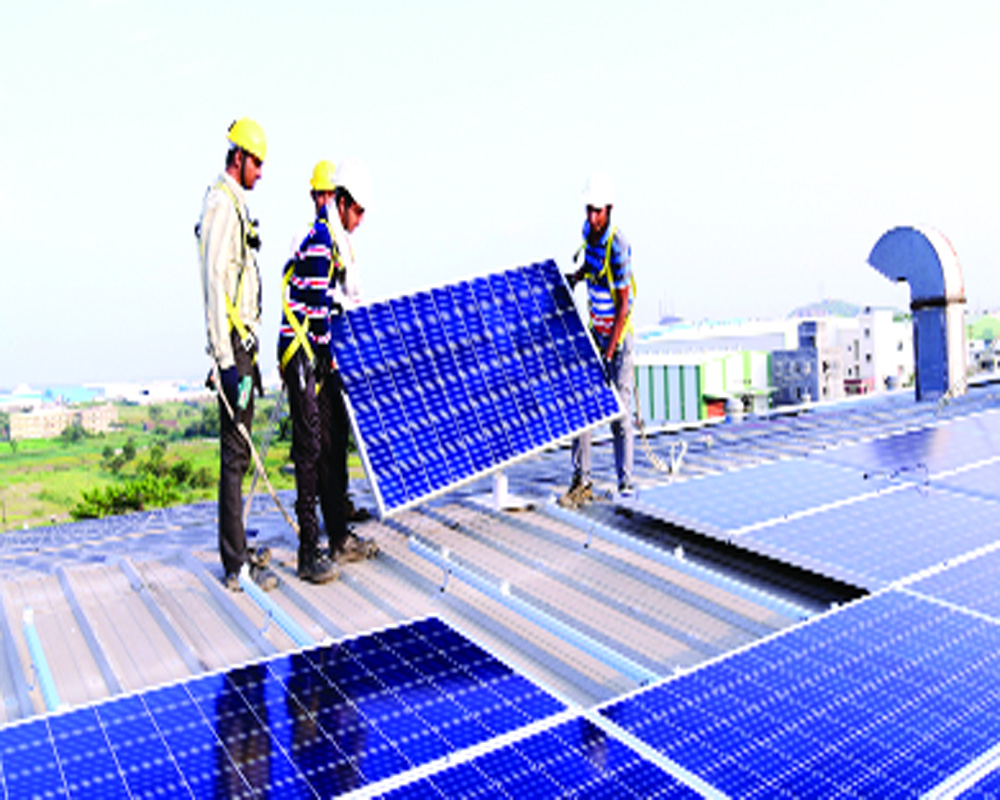India is charting an ambitious course toward Net Zero 2070, with solar energy emerging as the mainstay of its renewable revolution
India’s steadfast commitment to achieving Net Zero by 2070 is catalysing a dramatic shift in its energy sector, with solar power emerging as the principal driver of this transformation. Abundant sunlight, rapidly decreasing technology costs, strong government support, and an expanding skilled workforce have combined to place solar energy at the heart of India’s renewable strategy. While the country has celebrated significant milestones in solar adoption, it also faces multifaceted challenges that require innovative policy interventions and strategic foresight to sustain its momentum.
Over the past decade, India has achieved remarkable progress in solar energy. The nation not only met its ambitious renewable targets but exceeded them, with solar power now accounting for over 60 per cent of its renewable energy mix. By 2024, India surpassed the 100 GW milestone, establishing itself as a global leader in solar energy. For example, Rajasthan’s solar capacity exceeds 24 GW. Rapid expansion is evident in a 19 per cent increase in solar generation from 2023 to 2024, with solar installations making up over two-thirds of new renewable capacity.
India’s role in the International Solar Alliance underscores its commitment to global solar collaboration, as the initiative seeks to mobilise over $1 trillion in investments for developing countries. National agencies, particularly the Solar Energy Corporation of India, have been vital in driving the development and implementation of solar projects under the National Solar Mission.
Despite these impressive achievements, significant obstacles remain on the path to full solar integration. One major challenge is the limited connection of solar installations to the national grid, with only 16 per cent of capacity currently integrated. This gap restricts the country’s ability to fully exploit its vast solar potential. Moreover, there are stark regional disparities in solar development. While states like Rajasthan and Gujarat lead the charge, many eastern and northeastern regions lag behind, resulting in an uneven distribution of renewable resources.
Financial hurdles also pose serious challenges. Although government subsidies help reduce costs, the high initial capital required for large-scale installations, coupled with elevated interest rates and delayed payments, discourages private investment. Manufacturers struggle with a shortage of competitively priced solar cells, a problem compounded by strict Domestic Content Requirements that strain production capabilities. These financial constraints not only hinder current project deployment but also threaten future expansion in the sector.
Another critical issue is India’s heavy reliance on imported components. Despite having a domestic module production capacity of around 11 GW, India still depends on global supply chains for essential items such as polysilicon, wafers, and solar cells. This dependency leaves the country vulnerable to supply chain disruptions, particularly amid geopolitical tensions and trade imbalances, as China continues to dominate global solar manufacturing. Furthermore, the scarcity of critical minerals like cobalt, nickel, and lithium—vital for solar panel production—further complicates efforts to build a self-sufficient solar industry.
Local challenges add another layer of complexity. Land acquisition for solar projects often faces resistance from local communities and farmers, leading to protests, legal disputes, and, in some cases, violent confrontations. In Rajasthan, disputes over land rights have led to project cancellations, highlighting the need for transparent and inclusive processes that respect local interests and ensure fair compensation. Addressing these local concerns is essential for fostering community support and facilitating smoother project implementation.
To overcome these challenges, India must adopt a multifaceted strategy. Strengthening policy frameworks to provide long-term stability is crucial, as is enhancing inter-state cooperation and ensuring reliable access to energy data for effective monitoring. Public-private partnerships can expand solar adoption in underserved regions by providing risk mitigation instruments to attract investment. Promoting domestic manufacturing of solar panels and key components will reduce import dependency and bolster energy security. Additionally, investing in workforce development to build a skilled labor pool for solar installation, maintenance, and manufacturing will be vital for sustaining industry growth. By focusing on robust policy support, financial innovation, domestic manufacturing, and community engagement, India can significantly unlock the full potential of its solar resources. With sustained government backing and strategic collaboration between public and private sectors, the nation is well-positioned to lead the global solar revolution.
(The writer is assistant professor IIM Mumbai; views are personal. Inputs from Supriya Kaushik and Asmita Tewari)
























